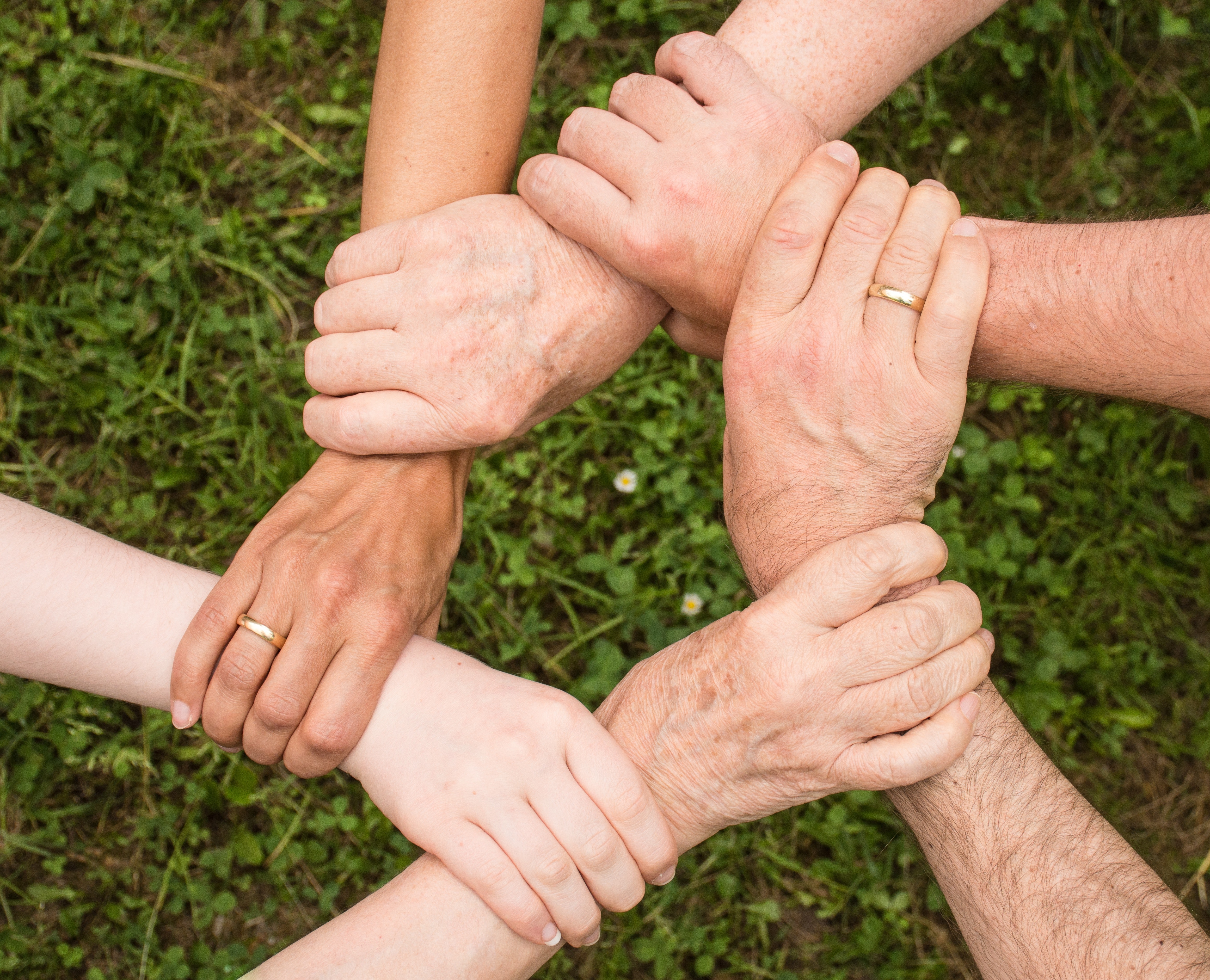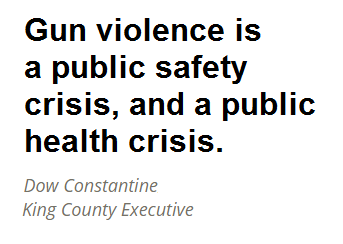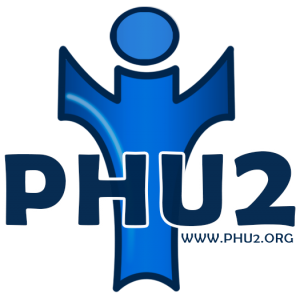HEALTHY COMMUNITIES
See: National Public Health Week 2019 - Healthy Communities
For science.
It's clear: People's health, longevity and well-being are connected to their communities — the places we live, learn, work, worship and play. For example, national health officials report at least 4 million U.S. households are home to children who are being exposed to high levels of lead, and about 6 million U.S. homes are considered substandard. Exposure to air pollution is linked to serious respiratory conditions such as asthma, and millions of Americans still get their drinking water through lead pipes. Communities of color often face greater community health risks — such as poorer air quality — and have fewer health-promoting opportunities — such as safe places to walk — than their white counterparts.
For action.
Defend the critical role of strong public health systems in creating healthier communities and urge decisionmakers to make health a priority in all policymaking. Work across sectors and outside of traditional public health circles to expand health-promoting opportunities. For example, help employers organize flu shot clinics, partner with transportation planners to expand safe biking and walking opportunities, or work with environmental justice groups to reach particularly vulnerable residents. Apply a health equity lens to ensure your efforts reach those most in need.
For health.
Smart local policies that prioritize health can make a difference. For instance, research shows that well-maintained sidewalks can encourage physical activity and that safe biking networks lead to more cycling and fewer injuries among bicyclists. Rates of preventable deaths — such as deaths from heart disease, diabetes and cancer — typically go down in communities where local public health spending goes up. Other research finds that deaths from cardiovascular disease, diabetes and the flu decline significantly in communities that expand their networks in support of population health goals. And removing leaded drinking water service lines would save billions of dollars in future health and productivity. Where people live — not just how they live — impacts their health, income, education and life expectancy.
Monday: Healthy Communities
For science.
It's clear: People's health, longevity and well-being are connected to their communities — the places we live, learn, work, worship and play. For example, national health officials report at least 4 million U.S. households are home to children who are being exposed to high levels of lead, and about 6 million U.S. homes are considered substandard. Exposure to air pollution is linked to serious respiratory conditions such as asthma, and millions of Americans still get their drinking water through lead pipes. Communities of color often face greater community health risks — such as poorer air quality — and have fewer health-promoting opportunities — such as safe places to walk — than their white counterparts.
For action.
Defend the critical role of strong public health systems in creating healthier communities and urge decisionmakers to make health a priority in all policymaking. Work across sectors and outside of traditional public health circles to expand health-promoting opportunities. For example, help employers organize flu shot clinics, partner with transportation planners to expand safe biking and walking opportunities, or work with environmental justice groups to reach particularly vulnerable residents. Apply a health equity lens to ensure your efforts reach those most in need.
For health.
Smart local policies that prioritize health can make a difference. For instance, research shows that well-maintained sidewalks can encourage physical activity and that safe biking networks lead to more cycling and fewer injuries among bicyclists. Rates of preventable deaths — such as deaths from heart disease, diabetes and cancer — typically go down in communities where local public health spending goes up. Other research finds that deaths from cardiovascular disease, diabetes and the flu decline significantly in communities that expand their networks in support of population health goals. And removing leaded drinking water service lines would save billions of dollars in future health and productivity. Where people live — not just how they live — impacts their health, income, education and life expectancy.

OCHD Considerations
-
Through collaboration with our partnering municipalities, the OCHD works diligently to protect the health and well-being of our communities through diverse public health programming and environmental enforcement activities. Some of the activities currently performed across our communities include:
1. Childhood Blood Lead Testing and Case Management
2. Environmental Lead Testing and Analysis
3. Cooperative Coastal Monitoring Program
4. Air and Noise Pollution Investigations
5. Health Education Programming
OCHD Initiatives
See: OCHD on Facebook
OCHD on Twitter
Ocean County Health Department Social Media
Throughout the week of National Public Health Week, the Ocean County Health Department will be posting information on multiple public health topics. Each day, a new topic will be covered to align with this year's themes.
OCHD on Twitter
Ocean County Health Department Social Media
Throughout the week of National Public Health Week, the Ocean County Health Department will be posting information on multiple public health topics. Each day, a new topic will be covered to align with this year's themes.

VIOLENCE PREVENTION
See: National Public Health Week 2019 - Violence Prevention
For science.
National data show gun-related deaths are on the rise: between 2015-2016, the U.S. was home to nearly 27,400 homicides and nearly 45,000 suicides involving guns. Those numbers are the highest documented levels in a decade. About one in four women and one in nine men experience some form of intimate partner violence, and one out of every six American women has been the victim of rape or attempted rape. In 2016, 676,000 victims of child abuse and neglect were reported to local officials. Not all communities face the same rates or kinds of violence. For example, black people are three times more likely to be killed by police than white people.
For action.
As public health professionals, violence prevention, including gun violence, is most assuredly part of our jobs. Urge policymakers to provide research funding that's on par with the nation's gun violence epidemic, and call on lawmakers to pass commonsense measures that reduce the risk of gun deaths and injuries. Work with local colleges and universities on ways to prevent sexual violence, such as offering bystander intervention training, and ways to better help victims of sexual violence, such as offering trauma-informed services. Learn about community-based strategies for creating the kinds of safe, stable and nurturing environments that help prevent child abuse and neglect. Advocate for community-driven solutions that identify and target the root of violence and don't criminalize entire communities.
For health.
Much more study is needed, but research already shows commonsense gun safety laws can make a difference. For example, researchers found that in the years following Connecticut's permit-to-purchase handgun law, firearm homicides went down 40 percent. (See the Connecticut study and much more in APHA's American Journal of Public Health, which has committed to making all of its gun research open access). More traditional, public health-based interventions can make a difference, too. Home-visiting models have been shown to significantly reduce the risk of child maltreatment. Community-led models can be especially effective when it comes to violence prevention. The innovative Cure Violence model — which takes methods typically associated with disease control and applies them to violence prevention — has resulted in significant drops in local gun violence. Public health scientists also have identified highly cost-effective, citywide interventions that revitalize the places that people live, work and play to reduce gun violence, crime and fear for communities most in need.
Tuesday: Violence Prevention
For science.
National data show gun-related deaths are on the rise: between 2015-2016, the U.S. was home to nearly 27,400 homicides and nearly 45,000 suicides involving guns. Those numbers are the highest documented levels in a decade. About one in four women and one in nine men experience some form of intimate partner violence, and one out of every six American women has been the victim of rape or attempted rape. In 2016, 676,000 victims of child abuse and neglect were reported to local officials. Not all communities face the same rates or kinds of violence. For example, black people are three times more likely to be killed by police than white people.
For action.
As public health professionals, violence prevention, including gun violence, is most assuredly part of our jobs. Urge policymakers to provide research funding that's on par with the nation's gun violence epidemic, and call on lawmakers to pass commonsense measures that reduce the risk of gun deaths and injuries. Work with local colleges and universities on ways to prevent sexual violence, such as offering bystander intervention training, and ways to better help victims of sexual violence, such as offering trauma-informed services. Learn about community-based strategies for creating the kinds of safe, stable and nurturing environments that help prevent child abuse and neglect. Advocate for community-driven solutions that identify and target the root of violence and don't criminalize entire communities.
For health.
Much more study is needed, but research already shows commonsense gun safety laws can make a difference. For example, researchers found that in the years following Connecticut's permit-to-purchase handgun law, firearm homicides went down 40 percent. (See the Connecticut study and much more in APHA's American Journal of Public Health, which has committed to making all of its gun research open access). More traditional, public health-based interventions can make a difference, too. Home-visiting models have been shown to significantly reduce the risk of child maltreatment. Community-led models can be especially effective when it comes to violence prevention. The innovative Cure Violence model — which takes methods typically associated with disease control and applies them to violence prevention — has resulted in significant drops in local gun violence. Public health scientists also have identified highly cost-effective, citywide interventions that revitalize the places that people live, work and play to reduce gun violence, crime and fear for communities most in need.

OCHD Considerations
-
While gun and sexual violence isn't directly addressed by the OCHD, some of the precursers to violence like substance abuse, addiction, and risky health behaviors are routinely addressed in our community. The OCHD provides innovative and evidence-based programs targeting some of the root causes and outcomes of these behaviors. Some of the activities currently performed across our communities include:
1. Substance Abuse and Addiction Referrals and Linkage to Care
2. Ocean County Overdose Fatality Review Program
3. ARCH Program
4. STD, HIV, and Hepatitis C Virus Testing
5. Domestic Violence Referrals
OCHD Initiatives
Click here for more information on new substance abuse programs offered by the OCHD
Click here for more information on our new senior prevention programs
New Substance Abuse, Addiction and Opiate Dependency Programming
Public Health Week is the official launch of the “Alternative Approaches to Pain Management for Older Adults.” Tune into our YouTube channels for more information on our new programs.
Click here for more information on our new senior prevention programs
New Substance Abuse, Addiction and Opiate Dependency Programming
Public Health Week is the official launch of the “Alternative Approaches to Pain Management for Older Adults.” Tune into our YouTube channels for more information on our new programs.

RURAL HEALTH
See: National Public Health Week 2019 - Rural Health
For science.
Rural communities face a range of health disparities, from higher burdens of chronic disease to limited access to primary care and prevention services. When compared to people living in urban areas, rural Americans face a greater risk of death from the five leading causes of death — heart disease, cancer, unintentional injury, chronic lower respiratory disease and stroke. Suicide rates are also higher in rural America than in urban areas, with that gap growing steadily since the early 2000s. The opioid addiction and overdose crisis has hit rural communities especially hard — the rate of fatal overdoses is higher in rural communities than in metropolitan ones. Complicating matters, rural residents are often more likely to face social determinants that negatively impact health, such as poverty, transportation barriers and lack of jobs that pay well.
For action.
Support telemedicine, school-based health centers and other efforts that connect rural residents to medical and supportive services. Partner with community stakeholders to overcome transportation barriers to care, such as coordinating ride-sharing services or helping residents navigate transit services. Advocate for supportive and evidence-based public health policies, such as easier access to naloxone and continued coverage for mental health and addiction care. Advance partnerships that target the social determinants, such as increasing job training opportunities, growing local employment, and helping children achieve academic success.
For health.
Studies show there are effective ways to tackle the biggest health problems facing rural communities. For example, telemedicine can expand access to care for people without a prior connection to a provider, with no increases in clinical misdiagnosis and errors. Research also shows that increasing access to naloxone can reduce opioid overdose deaths, and that thanks to the Affordable Care Act's Medicaid expansion, about 1.6 million Americans struggling with substance use disorders have gained insurance coverage. Direct care efforts such as school-based health centers also return promising results for children's health and academic achievement.
Wednesday: Rural Health
For science.
Rural communities face a range of health disparities, from higher burdens of chronic disease to limited access to primary care and prevention services. When compared to people living in urban areas, rural Americans face a greater risk of death from the five leading causes of death — heart disease, cancer, unintentional injury, chronic lower respiratory disease and stroke. Suicide rates are also higher in rural America than in urban areas, with that gap growing steadily since the early 2000s. The opioid addiction and overdose crisis has hit rural communities especially hard — the rate of fatal overdoses is higher in rural communities than in metropolitan ones. Complicating matters, rural residents are often more likely to face social determinants that negatively impact health, such as poverty, transportation barriers and lack of jobs that pay well.
For action.
Support telemedicine, school-based health centers and other efforts that connect rural residents to medical and supportive services. Partner with community stakeholders to overcome transportation barriers to care, such as coordinating ride-sharing services or helping residents navigate transit services. Advocate for supportive and evidence-based public health policies, such as easier access to naloxone and continued coverage for mental health and addiction care. Advance partnerships that target the social determinants, such as increasing job training opportunities, growing local employment, and helping children achieve academic success.
For health.
Studies show there are effective ways to tackle the biggest health problems facing rural communities. For example, telemedicine can expand access to care for people without a prior connection to a provider, with no increases in clinical misdiagnosis and errors. Research also shows that increasing access to naloxone can reduce opioid overdose deaths, and that thanks to the Affordable Care Act's Medicaid expansion, about 1.6 million Americans struggling with substance use disorders have gained insurance coverage. Direct care efforts such as school-based health centers also return promising results for children's health and academic achievement.

OCHD Considerations
-
Ocean County is among the largest and most geographically diverse counties in the state of New Jersey, ranging from shore to farming communities and large cities to small towns. With this diversity comes unique challenges, and opportunities, to meet the public health needs of our residents. Some of the activities currently performed across our communities include:
1. Diabetes Screening and Education Services
2. Heart Disease and Stroke Testing and Prevention
3. Cancer Education and Early Detection
4. Innovative Video-Based Communicable Disease Treatment Options
5. Naloxone Training and Distribution
OCHD Initiatives
Click here for a list of clinic services offered by the Ocean County Health Department
Click here for a calendar of available clinics
Ocean County Health Department: Clinic Services Division
The Ocean County Health Department strives to provide high quality clinical services to all Ocean County residents. Many of our services are offered free of charge to meet the needs of all residents.
Click here for a calendar of available clinics
Ocean County Health Department: Clinic Services Division
The Ocean County Health Department strives to provide high quality clinical services to all Ocean County residents. Many of our services are offered free of charge to meet the needs of all residents.

TECHNOLOGY AND PUBLIC HEALTH
See: National Public Health Week 2019 - Technology and Public Health
For science.
New technologies are quickly transforming the public health landscape. For example, state environmental health tracking programs are using spatial analysis and visualization methods to help predict people’s hazardous exposure risks. Organizers are building online learning communities where public health practitioners worldwide can swap best practices. National health officials use GIS mapping to track a range of serious health conditions — such as diabetes, heart disease and HIV — and use that information to deepen our understanding of the social determinants of health. In the nation’s public health labs, workers use state-of-the-art technology to rapidly detect, trace and contain disease outbreaks. And in health departments across the country, workers have taken to social media to educate and advocate within their local communities.
For action.
Support public health funding levels that allow the field's workers to leverage the latest technology on behalf of population health. For example, the ACA's Prevention and Public Health Fund provides millions of dollars each year to CDC's Epidemiology and Laboratory Capacity for Infectious Diseases agreement, which helps public health labs upgrade and maintain their equipment and technology and has been critical in scaling up laboratory response. Support and make time for workforce training efforts that teach public health practitioners how to use and deploy new technologies in their community health efforts. Embrace social media as a health improvement and advocacy tool.
For health.
Technology can be a potent public health tool. For example, evaluations of the free Text4baby app, which provides personalized text messaging services for pregnant women and new moms, finds that participants have higher levels of knowledge about issues such as staying healthy during pregnancy, safe newborn sleep and infant feeding. In addition, researchers found that Text4baby helped women, especially those without health coverage, access health services. Evidence is also beginning to emerge on the potential of health- and activity-tracking mobile apps in encouraging healthy behavior changes. However, ethical concerns remain on how to balance the benefits of new technologies and the massive amounts of data they generate with people's right to keep their health information private.
Thursday: Technology and Public Health
For science.
New technologies are quickly transforming the public health landscape. For example, state environmental health tracking programs are using spatial analysis and visualization methods to help predict people’s hazardous exposure risks. Organizers are building online learning communities where public health practitioners worldwide can swap best practices. National health officials use GIS mapping to track a range of serious health conditions — such as diabetes, heart disease and HIV — and use that information to deepen our understanding of the social determinants of health. In the nation’s public health labs, workers use state-of-the-art technology to rapidly detect, trace and contain disease outbreaks. And in health departments across the country, workers have taken to social media to educate and advocate within their local communities.
For action.
Support public health funding levels that allow the field's workers to leverage the latest technology on behalf of population health. For example, the ACA's Prevention and Public Health Fund provides millions of dollars each year to CDC's Epidemiology and Laboratory Capacity for Infectious Diseases agreement, which helps public health labs upgrade and maintain their equipment and technology and has been critical in scaling up laboratory response. Support and make time for workforce training efforts that teach public health practitioners how to use and deploy new technologies in their community health efforts. Embrace social media as a health improvement and advocacy tool.
For health.
Technology can be a potent public health tool. For example, evaluations of the free Text4baby app, which provides personalized text messaging services for pregnant women and new moms, finds that participants have higher levels of knowledge about issues such as staying healthy during pregnancy, safe newborn sleep and infant feeding. In addition, researchers found that Text4baby helped women, especially those without health coverage, access health services. Evidence is also beginning to emerge on the potential of health- and activity-tracking mobile apps in encouraging healthy behavior changes. However, ethical concerns remain on how to balance the benefits of new technologies and the massive amounts of data they generate with people's right to keep their health information private.

OCHD Considerations
-
Technology is a critical component of ensuring public health protection and the OCHD is no stranger to employing emerging technology and best practices. The Ocean County Health Department is currently in the process of working with and developing technology aimed at improving our residents’ access to the public health services they need and have come to expect from us. Some of the activities include:
1. LiveStories Interactive Health Assessment Data
2. Community distributed Self-Monitoring Blood Pressure Devices
3. Electronic Medical Record Integration
4. Development of a Mobile App
OCHD Initiatives
See: PHU2 our initiative for Ocean County residents to take action for their health and safety.
Public Health is You, Too!
Public Health is You Too!, or PHU2, is an initiative of the Ocean County Health Department aimed at partnering with and equipping local residents to take steps to protect and improve their personal health. Through personal public health initiatives and weekly action items, the Ocean County Health Department is committed to providing individuals with some of the guidance and encouragement needed to take practical and reasonable steps towards improving personal health
Public Health is You, Too!
Public Health is You Too!, or PHU2, is an initiative of the Ocean County Health Department aimed at partnering with and equipping local residents to take steps to protect and improve their personal health. Through personal public health initiatives and weekly action items, the Ocean County Health Department is committed to providing individuals with some of the guidance and encouragement needed to take practical and reasonable steps towards improving personal health

CLIMATE CHANGE
See: National Public Health Week 2019 - Climate Change
For science.
Tapped as one of the greatest threats to public health, climate change is expected to have — and is already producing — serious impacts on people’s health and well-being. Climate change: is linked to more frequent and extreme natural disasters, such as hurricanes, flooding and drought; is expected to negatively impact food security, water and air quality; and exacerbates the risks of vector-borne diseases, such as West Nile virus and Lyme disease. Like so many health threats, climate change is also expected to disproportionately impact already-vulnerable populations, such as the elderly, young children, families living in poverty and people with chronic diseases. On a more global scale, researchers warn that climate change will likely result in forced migration and civil conflict.
For action.
Stand up for science! Despite what some American leaders are saying, the science is clear: climate change is real, it's happening and human activities are a main cause. Call for adequate funding to support public health workers in monitoring, preparing for and responding to the health effects of climate change. Support policies that help mitigate and prevent worsening climate change, such as rules that reduce greenhouse gas emissions and partnerships that reduce people's reliance on cars. Such actions also can have positive co-benefits for health, such as improving air quality and encouraging active commuting. Make sure equity is a centerpiece of climate and health actions because climate impacts are not evenly distributed across communities and will likely worsen existing inequities. APHA’s Climate Change, Health, and Equity: A Guide for Local Health Departments is designed to help local public health departments integrate climate change and health equity into practice.
For health.
Health departments across the country are already busy preparing for the impacts of climate change, many of them participating in CDC's Climate-Ready States and Cities Initiative and embracing CDC's five-step Building Resilience Against Climate Effects, or BRACE, framework. Health departments using the BRACE framework are reporting a variety of success stories, such as launching new vulnerability assessments and working across sectors to reduce emissions. Addressing climate change also comes with new opportunities to save lives and improve health. For example, a 2018 brief from APHA and The Lancet (PDF) reports climate change is encouraging sectors and communities to begin the shift away from fossil fuels and toward renewable, clean energies. On the policy side — a key component of tackling climate change — research shows that smart policy can have big effects. For instance, federal officials estimate that reducing power plant emissions could prevent thousands of premature deaths and provide billions of dollars in public health benefits.
Friday: Climate Change
For science.
Tapped as one of the greatest threats to public health, climate change is expected to have — and is already producing — serious impacts on people’s health and well-being. Climate change: is linked to more frequent and extreme natural disasters, such as hurricanes, flooding and drought; is expected to negatively impact food security, water and air quality; and exacerbates the risks of vector-borne diseases, such as West Nile virus and Lyme disease. Like so many health threats, climate change is also expected to disproportionately impact already-vulnerable populations, such as the elderly, young children, families living in poverty and people with chronic diseases. On a more global scale, researchers warn that climate change will likely result in forced migration and civil conflict.
For action.
Stand up for science! Despite what some American leaders are saying, the science is clear: climate change is real, it's happening and human activities are a main cause. Call for adequate funding to support public health workers in monitoring, preparing for and responding to the health effects of climate change. Support policies that help mitigate and prevent worsening climate change, such as rules that reduce greenhouse gas emissions and partnerships that reduce people's reliance on cars. Such actions also can have positive co-benefits for health, such as improving air quality and encouraging active commuting. Make sure equity is a centerpiece of climate and health actions because climate impacts are not evenly distributed across communities and will likely worsen existing inequities. APHA’s Climate Change, Health, and Equity: A Guide for Local Health Departments is designed to help local public health departments integrate climate change and health equity into practice.
For health.
Health departments across the country are already busy preparing for the impacts of climate change, many of them participating in CDC's Climate-Ready States and Cities Initiative and embracing CDC's five-step Building Resilience Against Climate Effects, or BRACE, framework. Health departments using the BRACE framework are reporting a variety of success stories, such as launching new vulnerability assessments and working across sectors to reduce emissions. Addressing climate change also comes with new opportunities to save lives and improve health. For example, a 2018 brief from APHA and The Lancet (PDF) reports climate change is encouraging sectors and communities to begin the shift away from fossil fuels and toward renewable, clean energies. On the policy side — a key component of tackling climate change — research shows that smart policy can have big effects. For instance, federal officials estimate that reducing power plant emissions could prevent thousands of premature deaths and provide billions of dollars in public health benefits.

OCHD Considerations
-
The OCHD’s Environmental Division works in partnership with our municipalities and residents to respond to environmental issues and concerns. Similarly, our Communicable Disease Division works to monitor and investigate reports of vector-borne associated illnesses and diseases. Some of the activities currently performed across our communities include:
1. Air and Water Pollution Investigations
2. Cooperative Coastal Monitoring Program
3. Communicable and Vector-borne Disease Investigations
4. Mosquito Commission Referrals
5. Health Education Programming





